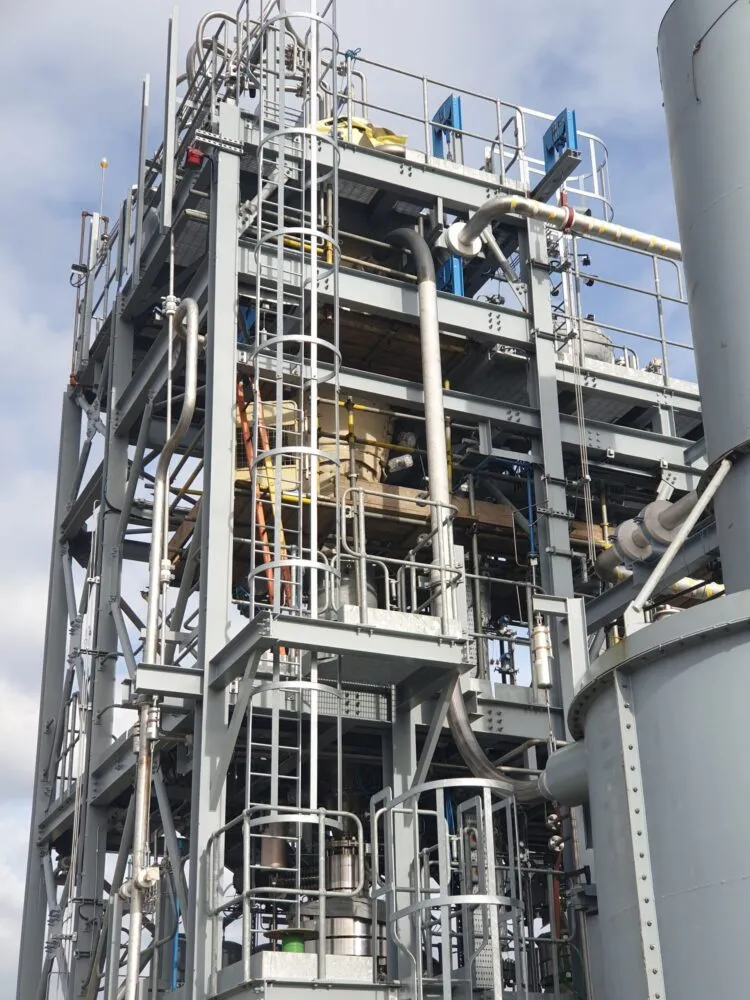The HyPER project consists of the design, construction and operation of a state-of-the-art 1 MWth hydrogen production pilot plant at Cranfield University to test an innovative hydrogen production technology that substantially reduces greenhouse gas emissions.The effective operation of the pilot plant requires significant training and to facilitate this, the project team at Cranfield want to use a Digital Twin approach that would enable training to be delivered via a virtual first or third-person perspective simulation.NovaSci demonstrated a digital twin visualisation based on a rapid prototyping workflow that can be deployed on multiple devices including desktop, tablet, and VR systems. Using this workflow NovaSci used the existing CAD representation of the pilot plant to construct a virtual environment in an interactive first-person simulation (FPS). The initial result (Figure 1) was achieved within a matter of days and acted as a proof of concept for the full project.
Having demonstrated the overall feasibility of the project NovaSci carried out a scoping exercise that reviewed existing, documentation, fitting procedures, maintenance procedures, photographs, and CAD models to specify the:
- Overall capabilities of the digital twin.
- Active components that need to be modelled within the visual simulation.
- Training objectives and how trainers would use the digital twin to achieve these objectives.
- Chemical process at the level of detail required by the training objectives.
- Site simulation design and capabilities.
- Process management interface (PMI).

However, as the primary purpose of the CAD model was to aid the construction of the HyPER plant it omitted some third party components (e.g. Figure 2), and other details relevant to the fidelity required for the production of a digital twin. To overcome this, the first major phase of the project was to ensure that all the critical components had corresponding CAD data, and that this could be located as discrete components. Where possible the manufacturer’s CAD data was used to supply missing components. Where this data was not available, components were modelled from scratch.

To ensure the digital twin can be used on a variety of hardware and not just high-end graphical workstations the CAD data was extensively optimised for real-time rendering within an advanced computational environment. Texture, lighting, sound, and other effects have been added to promote an immersive experience that provides a realistic training experience.

The system used by NovaSci allows for a multi-user, networked environment, and if necessary, bidirectional connectivity to real world systems. The current phase of the project will see the implementation of a Process Management Interface built around key specified training requirements. (Figures 4, 5). The interface will link to a process model to provide relevant functionality including start-up/shutdown procedures, temperature, and gas mixture. The process model will also link to, and interact with, the visual simulation. The completed digital twin will allow engineers to interact with (change valve status and take temperature readings) the site model and management systems in real time to learn operation and maintenance procedures (Figure 6).


The system offers a highly interactive digital environment. The novel approach used by NovaSci has ensured rapid development of advanced capability at a significantly reduced budget compared to other digital twin systems. NovaSci offers bespoke services in design for emerging technologies, and for fast-evolving systems, that need to be versatile, user-friendly, secure and future-proof. Our services include:
- Project and systems design
- Prototype design and production
- Training and education
- Data visualisation and motion capture

